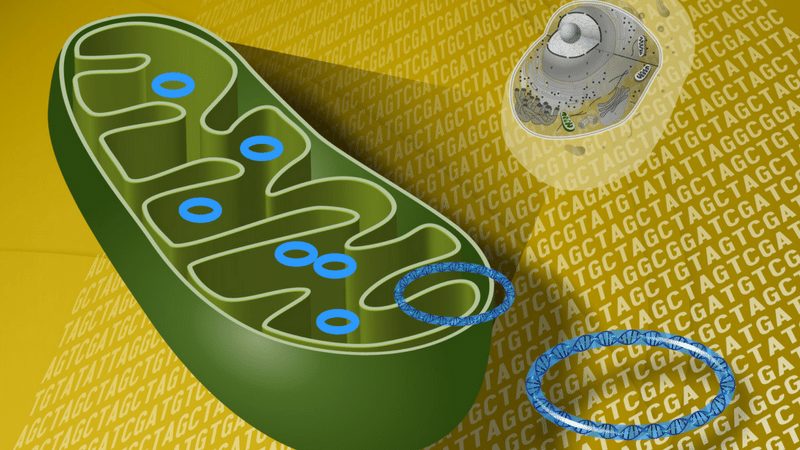Mitochondria and Chloroplasts—Energy Efficiency and the Endosymbiotic Theory
Episode #7 of the course How the cells work by Luis Francisco Cordero
Mitochondria and chloroplasts are odd organelles, since today’s scientific understanding is that they do not share the same origin with the others.
These vital units have many characteristics that lead us to believe they were free-living bacteria-like cells once. It is hypothesized that they were engulfed by another cell and began a very intimate collaboration with it. When two organisms establish such a relationship in biology, we call it symbiosis.
Unlike the rest of organelles, mitochondria and chloroplasts have their own genetic code, namely, circular DNA, like bacteria and unlike the open-ended nuclear genetic material that is characteristic of eukaryotic cells.

Structure of a mitochondria
Also, these organelles have a double-layered membrane that is consistent with the idea that they were, at some point, engulfed inside another cell’s cytoplasm. And finally, they multiply by pinching in half, like bacteria do.
Yet, this cooperative agreement does not imply one between two different cells, but rather of one inside another, which is why we refer to it as the endosymbiotic theory. That is, they are mutually cooperating, but mitochondria and chloroplasts are archaic cells that cooperate with another one while living inside it.
Energy Efficient, Much More Efficient
If a cell attempts to obtain energy units from a single glucose molecule, this will result in two units per molecule—that is, without employing mitochondria along the way. But if the same glucose is metabolized via the mitochondria (in the presence of oxygen), a grand total of 36 energy units can be obtained. Although the system is not perfectly efficient and around 30 units is usually the result, this still represents a 15x incremental energy production.
On the other hand, we have chloroplasts, which have a different but no less astonishing role in energy metabolism. They can actually take energy from sunlight and use it, in the presence of CO2 and water, to fabricate sugars and other compounds. This process of creating organic compounds by taking advantage of luminous energy is called photosynthesis.
Did You Know?
In the popular Star Wars saga, chosen individuals have the ability to channel and use The Force provided to them by their high body density of midichlorians. Such a funny name was inspired by mitochondria and chloroplasts, as they are related to energy provision to actual cells.
Key Takeaways
Mitochondria and chloroplasts are key organelles, closely related to energy production and its efficiency. Unlike other organelles, they share a fascinating origin: They were once free-living prokaryotic cells, like bacteria. At some point, mitochondria and chloroplasts made their way inside another cell and took specialized jobs there: Mitochondria augment the efficiency of the energy production chain, and chloroplasts generate carbohydrate molecules via photosynthesis.
Tomorrow, we’ll learn how the whole organism is developed from the cells.
Learn Something New Every Day
Get smarter with 10-day courses delivered in easy-to-digest emails every morning. Join over 400,000 lifelong learners today!
Recommended book
Power, Sex, Suicide: Mitochondria and the Meaning of Life by Nick Lane
Share with friends

